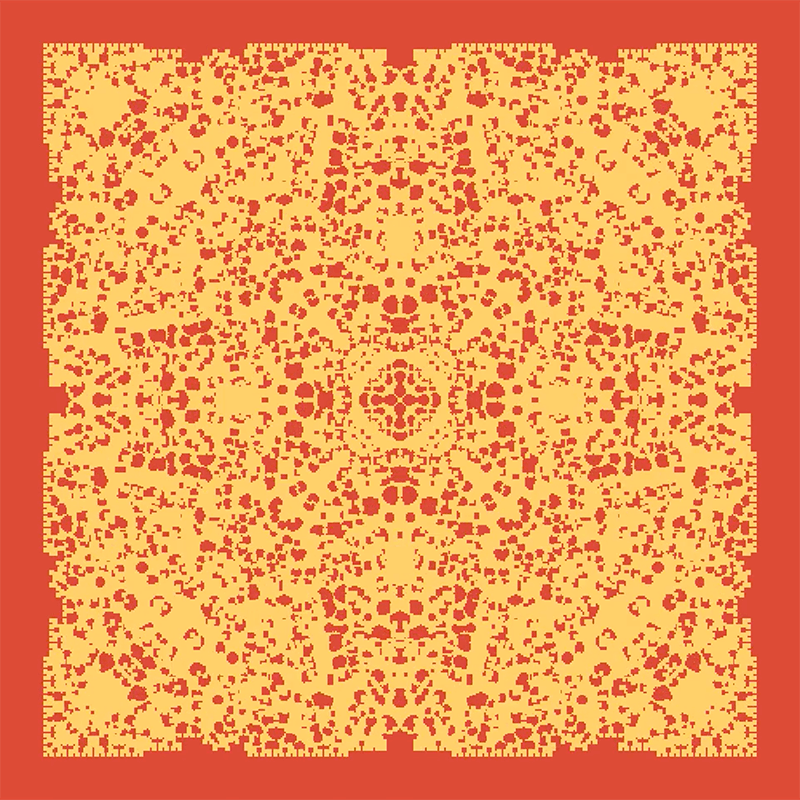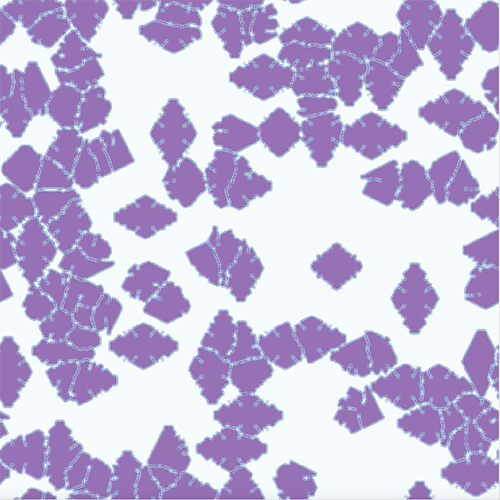The world is a regular square grid of cells. Each cell represents one player that possesses two internal properties: a strategy and a payoff. The strategy determines how the player interacts with its neighbors. Thus, the basic interaction is pair-wise. However, the neighborhood of a player, which is defined through the grid, consists of multiple players, such that that multiple games are played per iteration step. The resulting gain from the individual games are summed up and stored as each player’s payoff.
The payoff a player receives from a single game is encoded in the interaction matrix, where each matrix element i, j denotes the payoff a player with strategy i receives when playing against a player with strategy j. In this game, there are two possible strategies. In the case of a Prisoner’s Dilemma, these strategies correspond to cooperation and defection. Here, we want to be able to model all kind of two-dimensional two-player games, hence the more general nomenclature.
Neighborhood
The neighbors of a player placed on a regular square grid are determined by the Moore neighborhood (9-neighborhood) of the corresponding cell. Thus, every player has 9 neighbours against which she plays in a single iteration step.
Evolution
Evolution is modelled by a very simple imitation update scheme. After all games are played, every player looks in her neighborhood for the player with the highest payoff, thus, the player with the most successful strategy in her corresponding neighborhood. If this highest payoff is higher than the player’s payoff, she adapts her strategy to that of the more successful neighbor. This means that, in the next round, the player will participate in all the individual games with the strategy that locally yielded the best result in the previous round.
If more than one player has the highest fitness in a neighborhood, one of these is selected randomly to pass on her strategy.
Iteration steps
An interaction step consists of two stages:
-
Play the games: every player plays with all players in her neighborhood the game defined by the interaction matrix. The payoffs of the games are summed up and stored as a property of the players.
-
Update the strategies: each player looks within its neighborhood for the most successful strategy (highest payoff) and adapts this strategy for the next iteration step.
These two steps are repeated for the desired number of iteration steps.

